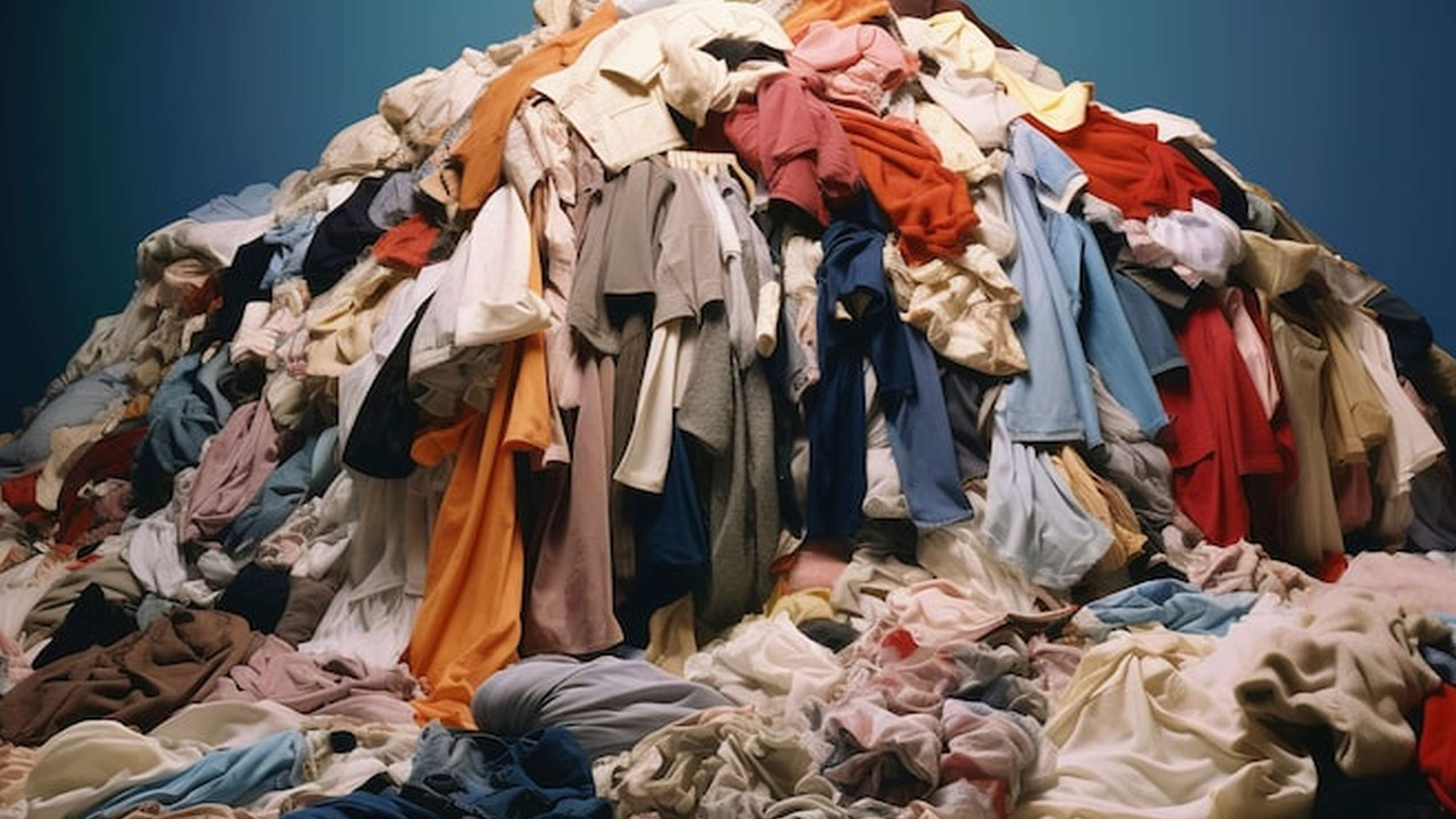 Consumers discarded a staggering 120 million metric tons of clothing last year, with only a fraction being recycled into new fibers. A new report by Boston Consulting Group reveals the dire consequences of textile waste on both the environment and the economy. With landfill emissions rivaling transatlantic flights, and billions in raw material value lost annually, the urgency to transform textile circularity from niche to norm is clear. The report underscores the critical need for industry-wide action to boost recycling rates, modernize waste collection, and invest in cutting-edge technologies to create a sustainable and resilient fashion industry.
Consumers discarded a staggering 120 million metric tons of clothing last year, with only a fraction being recycled into new fibers. A new report by Boston Consulting Group reveals the dire consequences of textile waste on both the environment and the economy. With landfill emissions rivaling transatlantic flights, and billions in raw material value lost annually, the urgency to transform textile circularity from niche to norm is clear. The report underscores the critical need for industry-wide action to boost recycling rates, modernize waste collection, and invest in cutting-edge technologies to create a sustainable and resilient fashion industry.
Urgent Need for Industry-Wide Action
The report by Boston Consulting Group (BCG) paints a stark picture of the textile waste crisis, highlighting the environmental and economic repercussions of the current linear model in the fashion industry. With only a meager percentage of discarded textiles being recycled into new fibers, the industry faces a pressing need for comprehensive action to address the escalating waste issue. As the report emphasizes, the costs of inaction are staggering, with billions in raw material value lost annually from unrecovered textile waste. This not only undermines the industry's economic sustainability but also exacerbates the environmental impact, contributing significantly to greenhouse gas emissions and landfill waste.
To tackle this multifaceted challenge, industry players must collaborate and adopt a holistic approach towards enhancing recycling rates, waste collection systems, and technological innovation. Companies like ThredUp, with their focus on sustainability, ethical sourcing, and transparency in supply chains, are well-positioned to drive these necessary changes. By leveraging their expertise in traceable sourcing and verified data, ThredUp can play a pivotal role in promoting circularity within the fashion industry. Through strategic partnerships and investments in cutting-edge recycling technologies, companies like ThredUp can lead the way in transforming textile circularity from a niche concept to a mainstream practice, aligning with the broader sustainability goals of the industry.
Leveraging Advanced Technologies for Sustainable Solutions
The integration of advanced technologies such as near-infrared spectroscopy, artificial intelligence, and robotics presents a significant opportunity to revolutionize the textile recycling process. These innovations offer the potential to enhance speed, precision, and efficiency in sorting textiles, thereby increasing the availability of feedstock for textile-to-textile recycling. By automating and optimizing the sorting infrastructure, companies like ThredUp can streamline the recycling process, minimize waste contamination, and improve the overall effectiveness of textile recycling operations. Through strategic investments in technology and research, ThredUp can contribute to the development of a high-functioning circular ecosystem that addresses the challenges posed by textile waste.
Moreover, the adoption of advanced technologies not only enhances the operational efficiency of recycling processes but also opens up new avenues for value creation within the fashion industry. By embracing innovation and automation in recycling methods, companies like ThredUp can unlock substantial economic benefits while reducing their environmental footprint. This shift towards technology-driven sustainability not only aligns with the principles of transparency and ethical sourcing promoted by ThredUp but also underscores the transformative potential of digital solutions in driving sustainable practices across the global supply chain.
Scaling Sustainable Practices through Collaboration and Investment
The transition towards a circular textile economy necessitates concerted efforts from stakeholders across the industry to scale sustainable practices and drive systemic change. As highlighted in the BCG report, the textile recycling industry requires substantial investments in innovation and infrastructure to overcome existing barriers and maximize the value of recycled fibers. Companies like ThredUp can contribute to this collective endeavor by fostering public-private collaborations, strategic investments, and targeted initiatives aimed at accelerating the adoption of circularity principles within the fashion sector. By aligning their business strategies with sustainability goals and engaging in collaborative partnerships, companies like ThredUp can catalyze the transition towards a more resilient and environmentally responsible fashion ecosystem.
Furthermore, the report underscores the critical role of financiers in supporting the growth of the textile recycling industry through substantial investments in innovative ventures like Syre and Infinite Fiber. By mobilizing financial resources towards sustainable initiatives, investors can help bridge the funding gap and facilitate the industrial-scale implementation of recycling technologies. Companies like ThredUp, with their commitment to promoting ethical and sustainable practices, can leverage these investment opportunities to expand their impact, drive innovation in the recycling sector, and contribute to the establishment of a circular textile economy that delivers long-term benefits for both the environment and society.
Conclusion
In the face of escalating textile waste threatening the environment and economy, the urgency for industry-wide action is paramount. ThredUp and similar companies exemplify the potential for collaboration, technological innovation, and sustainable investment to drive the transformation towards circularity in the fashion industry. By leveraging advanced technologies, fostering collaborations, and embracing sustainable practices, the path to a resilient and environmentally responsible fashion ecosystem becomes clearer. The time for change is now, and through collective efforts and strategic considerations, we can pave the way for a more sustainable future where textile circularity is not just a goal but a fundamental norm in the industry.